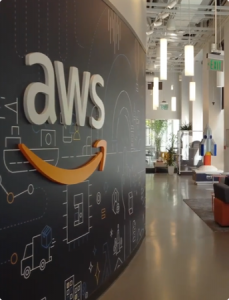Logistics sector prioritizes digital transformation
Logistics sector prioritizes digital transformation, but needs technology leadership, skills
Despite the shipping and logistics industry’s reputation as a technology laggard, digital transformation initiatives have deeply penetrated the sector, with product and service improvement as the primary driver. Nearly two-thirds of organizations say they have a digital transformation plan in place, and most others say they’re considering one.
That aggressive — and surprising — level of digital adoption is among the most notable takeaways from the survey, which asked 500 shippers, logistics service providers and carriers about their technology adoption and projects. The sector’s biggest inhibitor to reaching its ambitious goals is a shortage of people and skills, which can be at least partially overcome through the adoption of digital-enabling technologies such as cloud computing, IoT connectivity and AI/machine-learning analytics. This adoption is underway but remains in its early stages.
Digital transformation is top of mind. Two-thirds (67%) of shipping and logistics firms say they have a formal digital transformation strategy in place to actively digitize business processes. Nearly all the rest — 31% — say they are considering or evaluating such a plan. Only 3% say they have no digital transformation strategy. Shippers have the highest percentage of respondents with a digital transformation plan in place (70%), followed by logistics service providers (64%) and carriers (57%). The most cited hurdle to digital transformation is skills and people shortage (40%), followed by legacy mindset and not enough proof of return on investment.
Cloud computing (40%) is considered the most impactful technology for digital transformation among shipping and logistics firms. This is followed by IoT connectivity technology and AI/ML. At the bottom of the list are edge computing, virtual reality and augmented reality, and autonomous vehicles and robots. Additionally, nearly all organizations say that they have a primary technology partner for digital transformation. Transportation and logistics software providers are one of the top two most important partners for all sectors. For shippers, the other top two choice was cloud provider; for logistics service providers, it was supply chain management software provider; for carriers, it was their IoT device or software vendor.
Freight tracking is of prime importance across all interested parties in downstream supply chain operations. Whether labeled “real-time tracking” or “cargo tracking,” knowing where deliveries are at every step on the journey is one of the most important digital transformation projects for supply chain companies. At least half of companies in all subsectors have this capability in place, ranging from 59% among logistics service providers to 55% among carriers and 50% among shippers.
A graph of a project
Description automatically generated with medium confidence
Logistics service providers believe comprehensive supply chain visibility isn’t far off. We asked logistics service providers how far away they think comprehensive supply chain visibility is. About four in 10 say it is here now and they already “have the ability to easily track shipments across all modes and geographies at all times.” Count us skeptical, but the point remains: Logistics service providers are extremely confident about their ability to provide end-to-end visibility to customers. None say it is a pipe dream, and only 7% say it is “possible, but not for a while” due to technology and partnerships needing substantial improvement for it to happen. The remaining 54% say it is likely that in the next few years they will fill any remaining visibility gaps.
Transportation carriers are highly focused on reducing delays and accompanying fees. Delivery delays (46%) and fuel costs (39%) are the two biggest problems that transportation carriers are aiming to solve with technology. When broken down by transportation mode, there is a clear dichotomy in the order of those top two problems. For rail, ocean and air carriers, reducing delays is the top concern (50%), and controlling fuel and other costs comes second (32%). For truckload and parcel carriers, however, controlling fuel and other costs is top of mind (69%), followed by reducing delays (38%).










